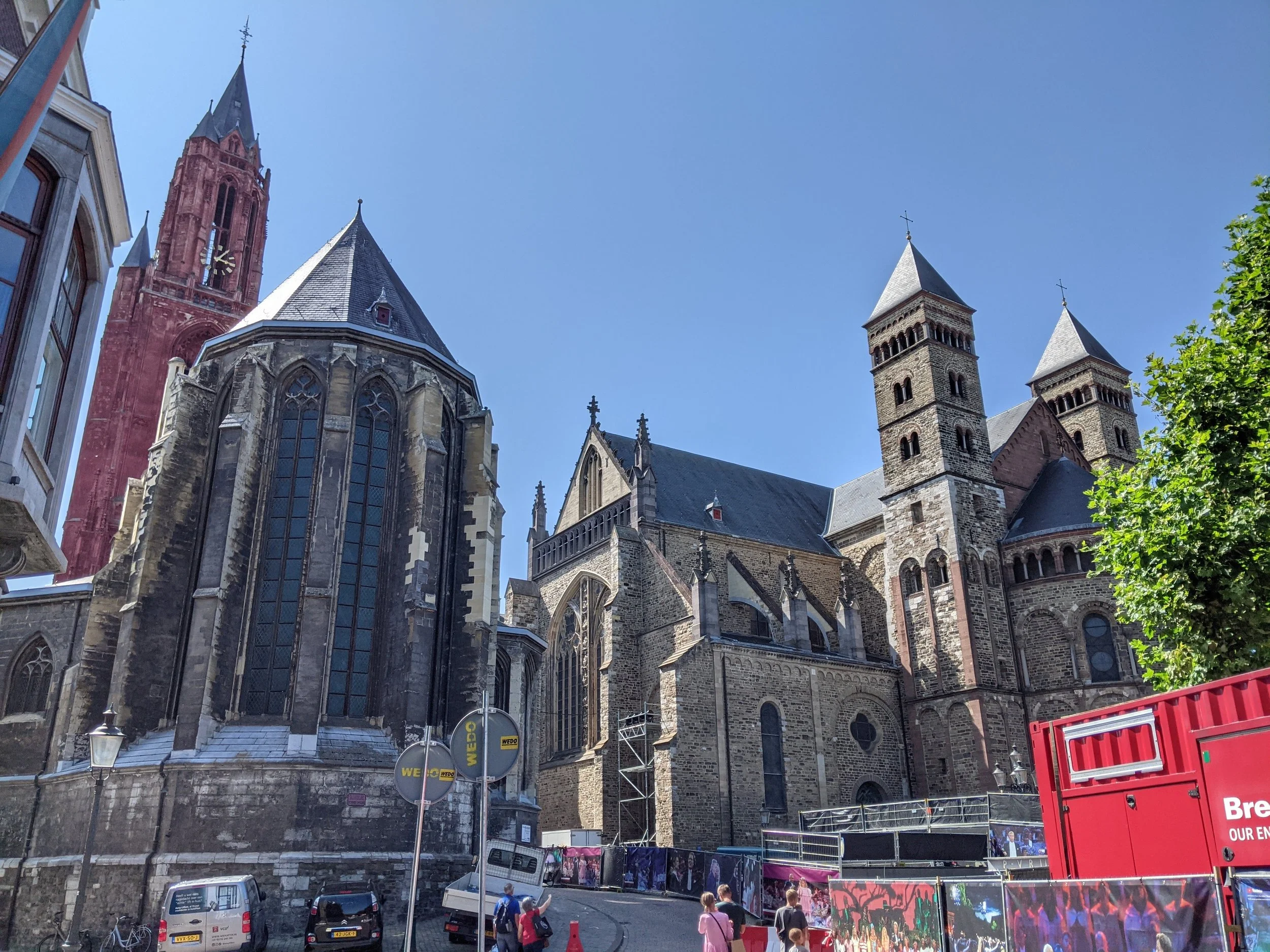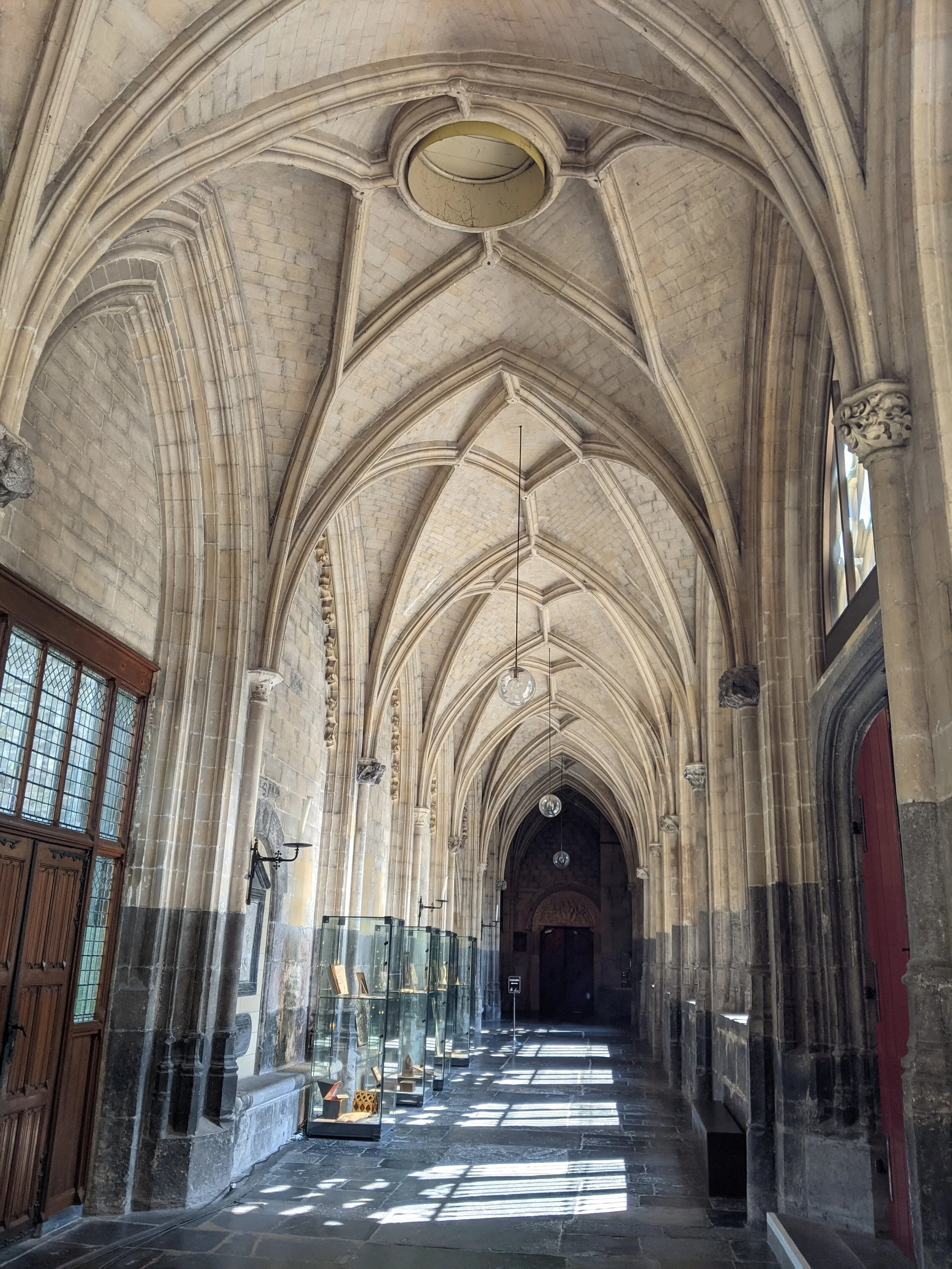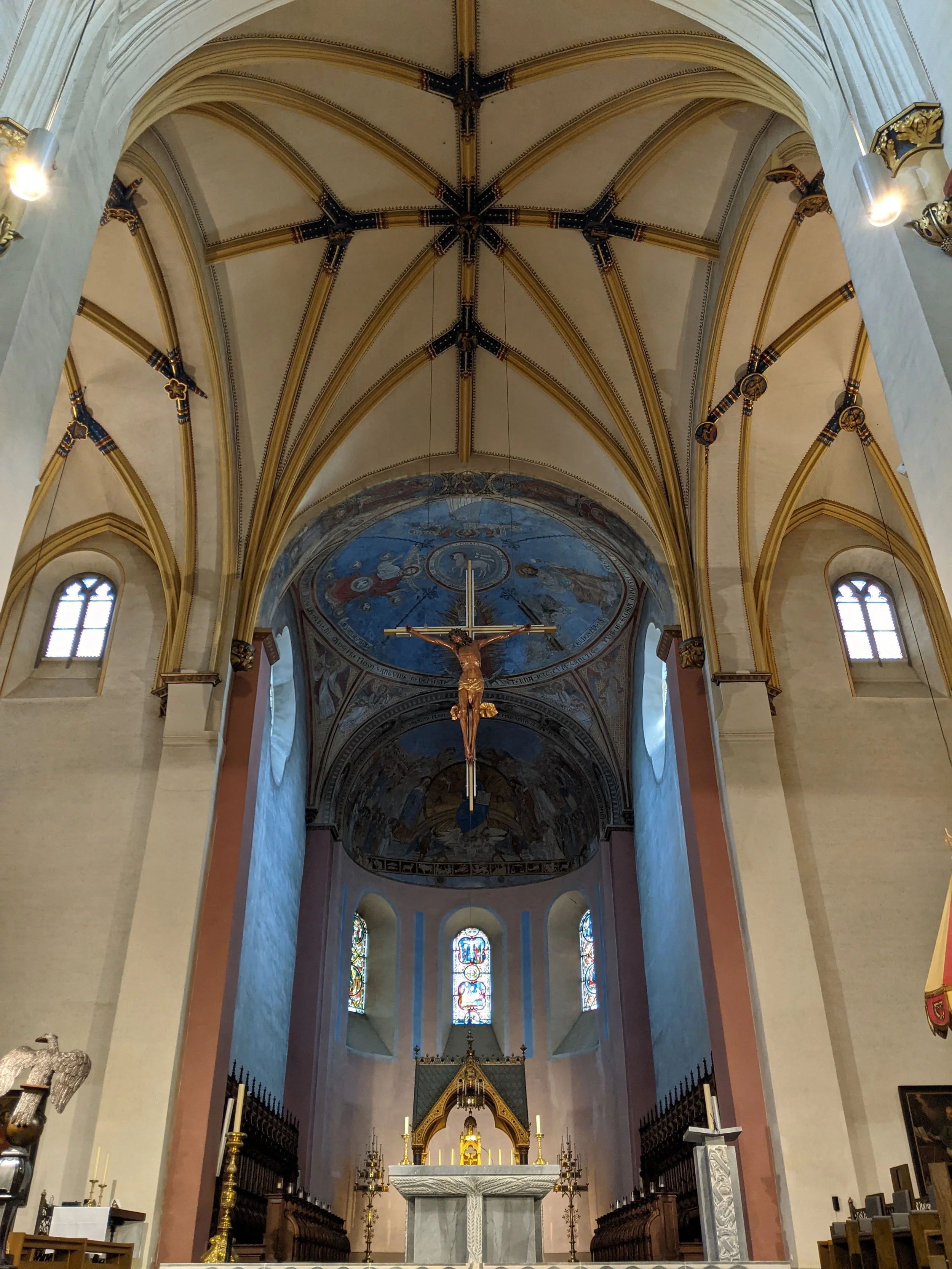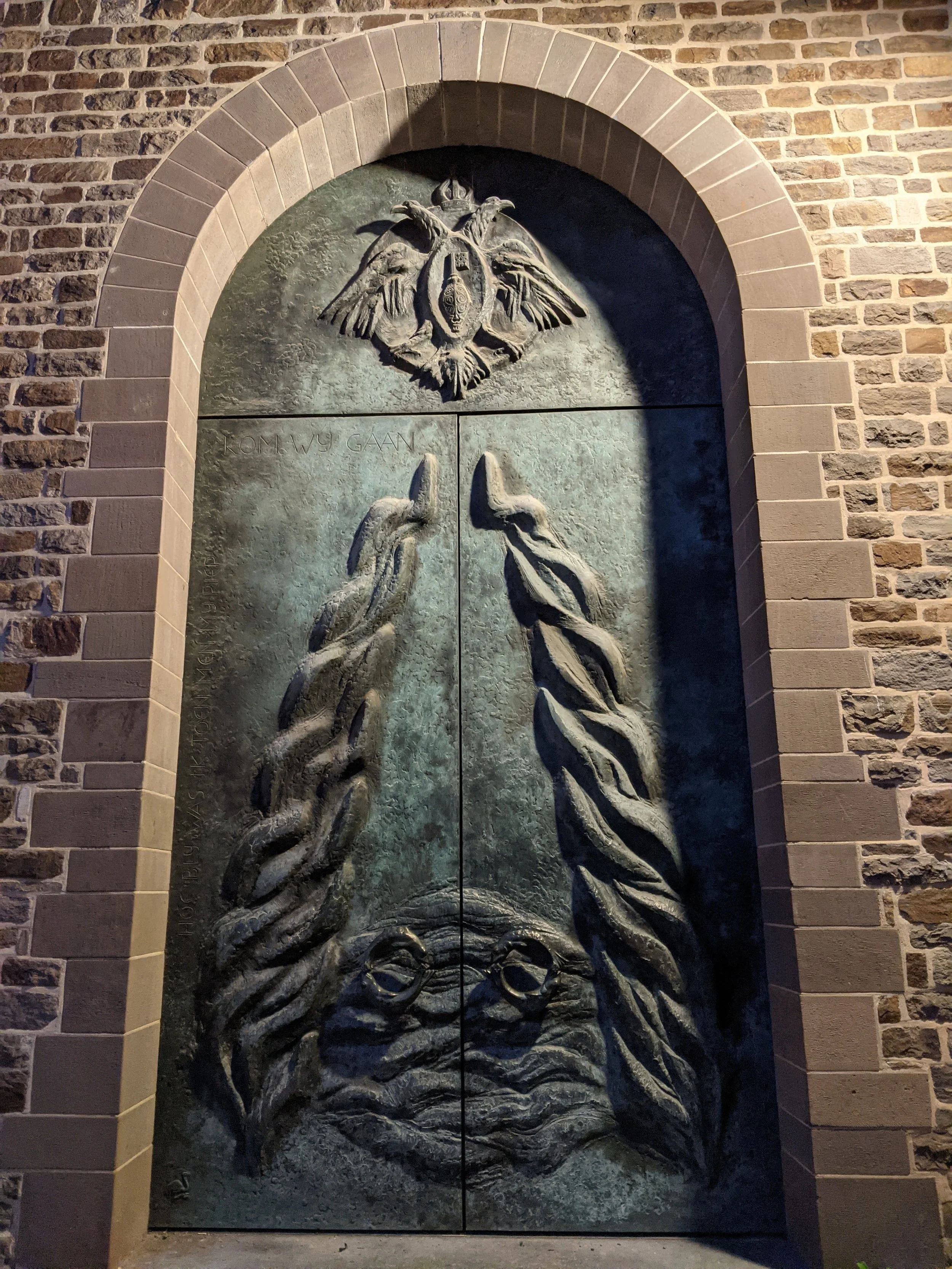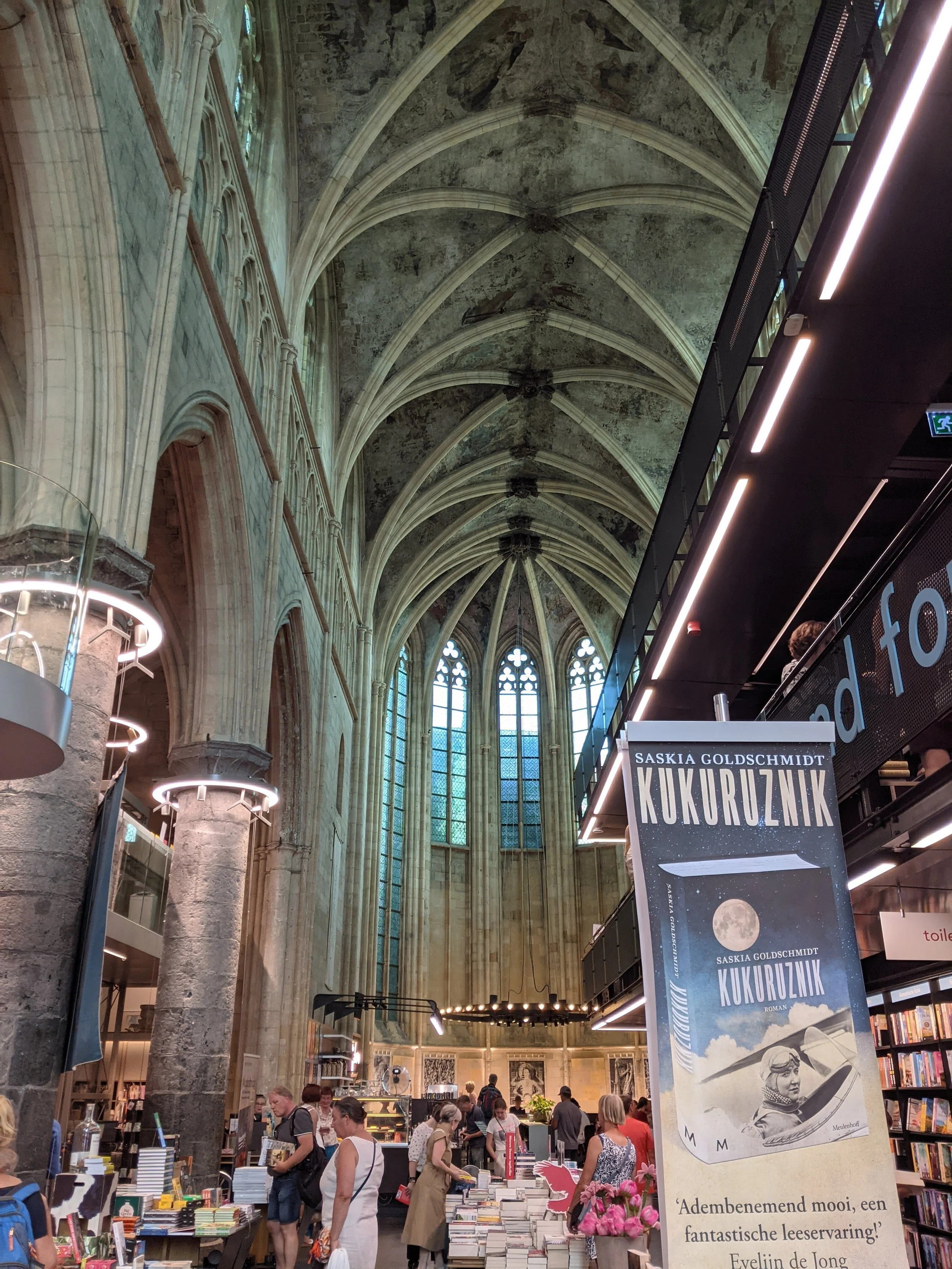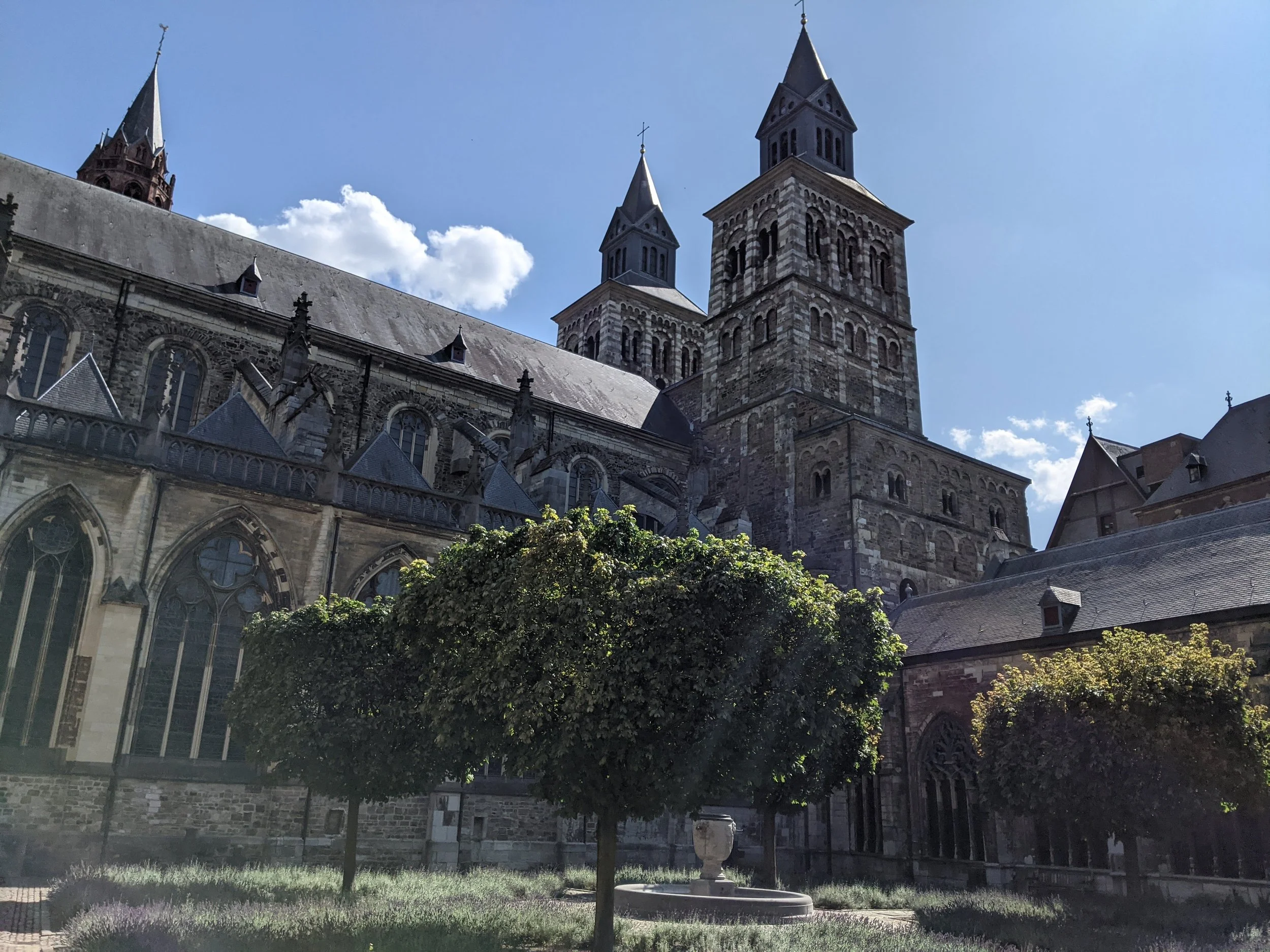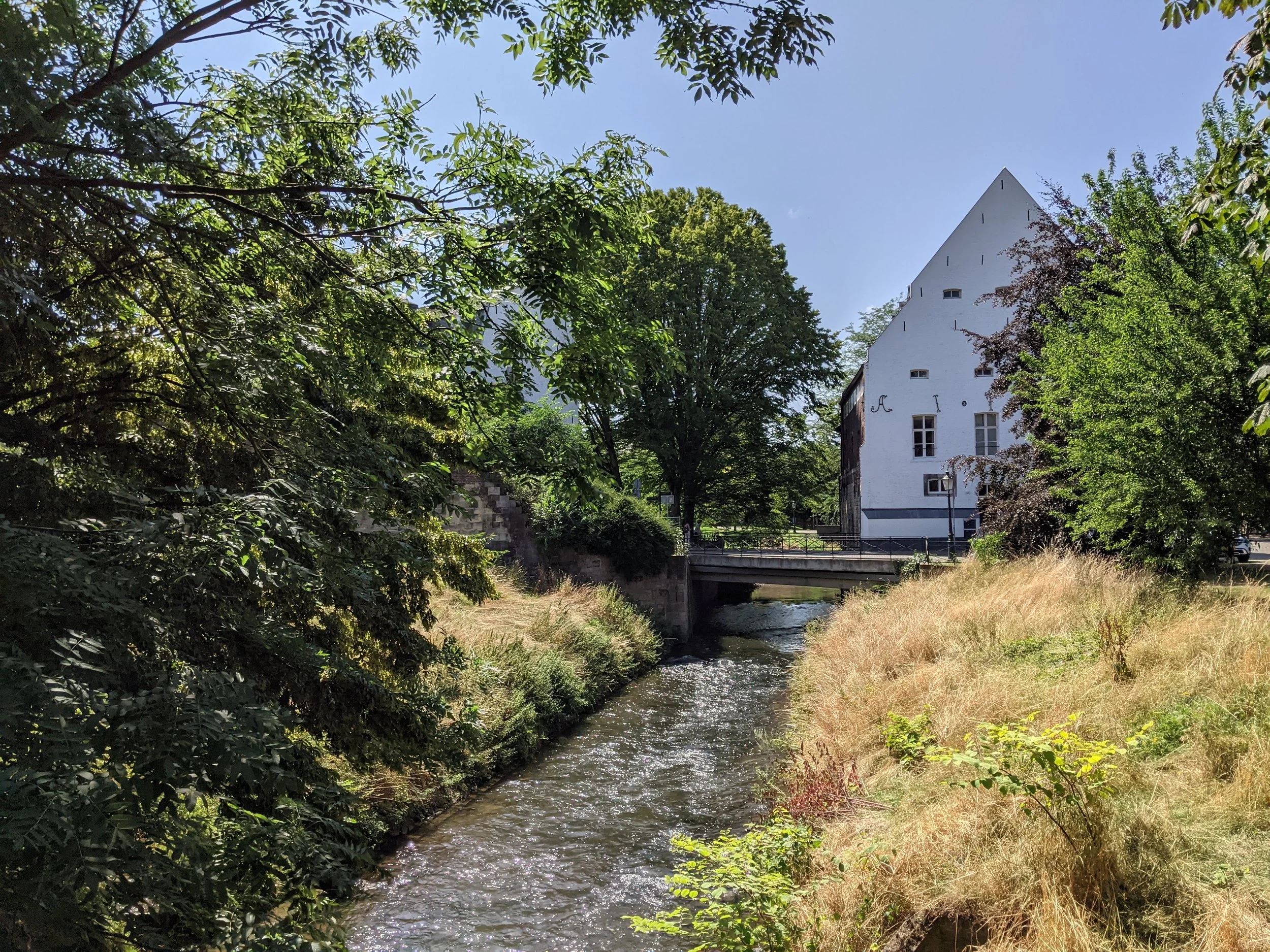Maastricht: Magical & Medieval
In Vrijthof in Maastricht, facing west towards two of its main churches
Maastricht, without a doubt, is one the jewels of the Netherlands. It’s beautiful, antique, has a helpfully laid out and interwoven walkable downtown, has tons of noteworthy sites, and loads of excellent cafes and bares interspersed throughout its entirety. It’s odd geographical placement in the Netherlands – way, way southeast tucked into a strange, puzzle piece-like protrusion of land sandwiched between Belgium and Germany – makes it tough for international visitors to typical sites like Amsterdam in the northwest to reach. But, it’s ideally placed for folks traveling to and fro between Belgium, Germany, and the Netherlands. In fact, Maastricht reminds me more of a small German city than a Dutch city, and easily one of the most medieval-looking and -feeling city in the country. Casual visitors, however, might not recognize such differences.
When I visited Maastricht for the first time, I used Google Maps to scan an ideal path through the city. In so doing I inadvertently traveled along a widely-recommended loop that more or less passes out and west from Maastricht station, through the city’s key sites, and back to the station. I, however, did the loop in reverse: clockwise along the southern of Maastricht’s two bridges and back across the northern drawbridge to return to the station. But really, such considerings don’t matter at all. No matter where you go and what you, you’ll have a wonderful time just poking around and and taking in the sights.
If you can avoid having to see all of the city in one day, I’d recommend it. Much like other Dutch cities, or smallish European cities in general, Maastricht is best experienced as a combination of pointed visits to tentpole sites combined with incidental, unplanned happenings along the way.
ACCESS:
As mentioned, Maastricht is far away from everything in the Netherlands, except nearby Eindhoven: a city that could not be more different from Maastricht in every way. Maastricht is the end of a continuous train line that starts in the northwest in Den Haag some 3.5 hours away, or up in Amsterdam and passes through Utretcht on the way southeast. Basically, if you want to see Maastricht you’ve got to commit to it. Or, if you’re traveling through nearby cities – Brussels, Antwerp, Dusseldorf, Cologne, etc. – you can sweep through Maastricht along the way.
The splendor of Maastricht (not an overstatement) won’t be apparent right out of its central station. You’ve got to hook left out of the station, then right down a long strip (west). You’ll pass through a packed thoroughfare of al fresco cafes, tavern-type bars, a median with eateries and drinkeries along it, branching paths north and south of the main strip, and so forth (Stationstraat, which narrows into Wycker Brugstraat). If you’re the kind of person who likes to linger, even this path alone could occupy several hours of your time, at least if you browse some shops or have a couple drinks. It’s pretty enough to, as well.
Maastricht proper doesn’t come into view until you reach the Meuse River and its bridges. There are three bridges that cross the river, and they’re all pretty close together: the north bridge (Wilhelminabrug), the main bridge (Sint Servaasbrug, built from a 13th-century footbridge), and the south, newest bridge (Hoge Brug). You can take any of these bridges to cross, and there’s plenty of riverside restaurants, parks, and whatnot on the east side of the river even before you cross, so enjoy.
Those following the recommended loop can just follow Wycker Brugstraat straight acorss Sint Servaasbrug and into the heart of the city’s old, walkable, medieval, cobblestoned downtown. From there you can circle through the city and exit back towards the station via Hoge Brug. But as I mentioned, I did things oppositely.
Once inside Maastricht proper – not to discount everything else the city has to offer, but really: this is the core of the place – you can spend all the time you want bouncing from site to site, cathedral to cathedral, hof to hof (squares/markets ringed in pubs and cafes), and more.
STANDOUT ITEMS:
There is so, so much to do in Maastricht, and especially so if you like old architecture, and double so if you like old cathedrals. For that you’ve got Basiliek van Onze Lieve Vrouwe (Basilica of Our Lady) near Hoge Brug, Sint Janskerk (Saint John’s Church, with its iconic red tower), and the Basiliek van Sint Servaas (Basillica of Saint Servatius) next door. And, if you’re already at the Basiliek van Sint Servaas there’s no reason to miss the small but lovely chapel Cappella Sancti Servatii right next door. And and, you’ve got the Schatkamer St. Servaas (The Treasury of Saint Servatius) attached to the Basiliek van Sint Servaas and accessible through its inside. The treasury is basically an entire museum unto itself, with multiple floors and side rooms, and it absolutely stuffed with old relics, goblets, silver and gold doohickeys, and such. You’ll kick yourself if you visit the basilica and don’t go here – it’s frankly awesome.
Rather than go into tedious details that are best left to more extensive internet research or firstperson experience once there, suffice it so say: All three of the main churches are worth the visit, especially because all three are so radically different. The Basiliek van Onze Lieve Vrouwe is dark, brooding, utterly gothic and even claustrophobic, with gold accents everywhere near windows to add brightness to the place. And yes, there’s a subterranean level, too. The Basiliek van Sint Servaas, by contrast, is wide, open, sprawling, full of windows and light, and has an interior, enclosed courtyard to stroll through. Sint Janskerk is arguably more impressive from the outside than inside, considering its red tower (which is a good landmark to use to navigate around the city), but inside is smaller, compact, graceful, and often used for concerts or other musical events. Like I said, all three locations are more worth the visit. Also, the Basiliek van Sint Servaas is the only one to charge an entry, and it’s only 5 euro, so there’s no reason to gripe about helping to maintain the site. Plus, it’s got that impressive treasury inside.



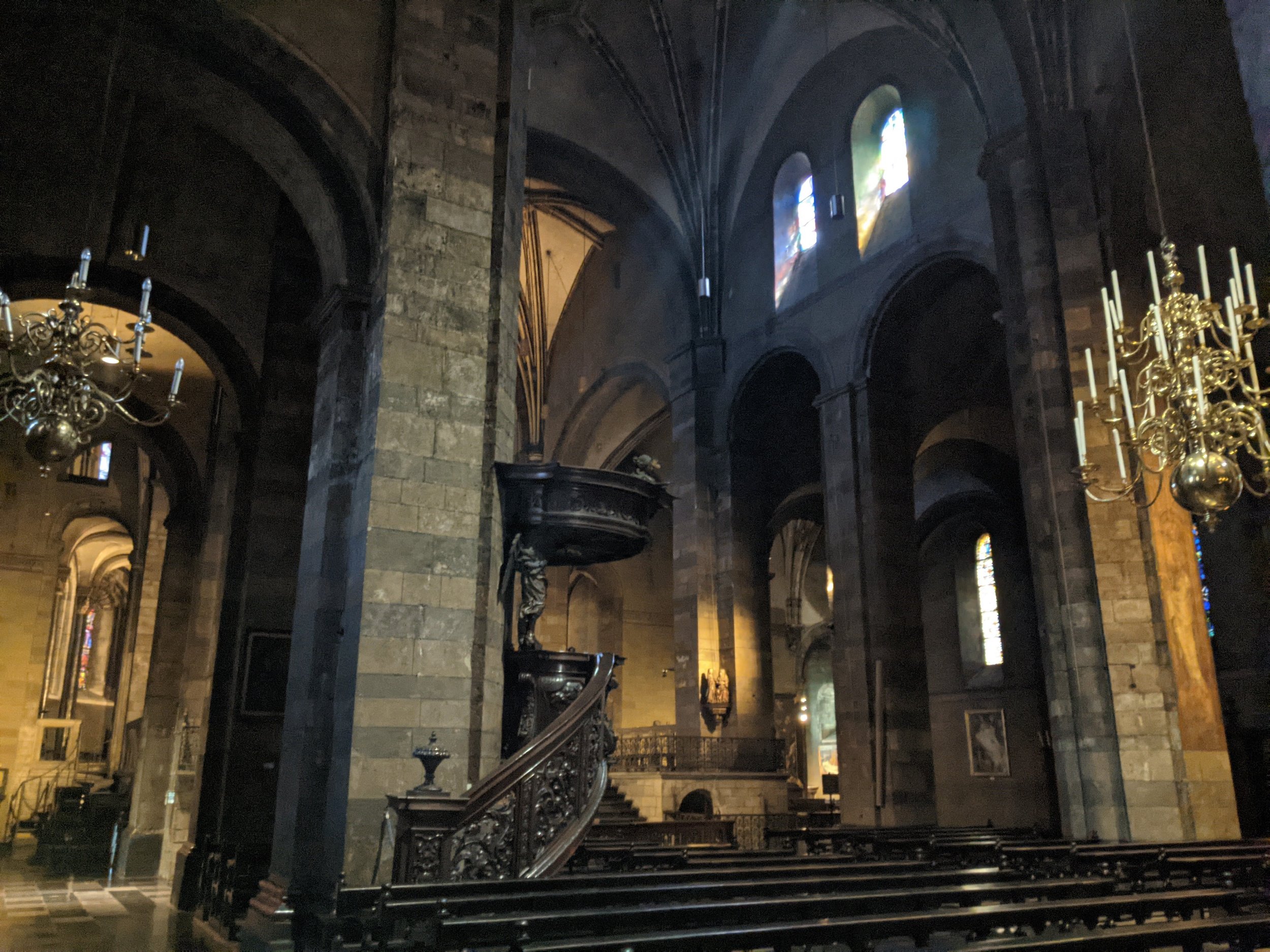
Besides all this, Maastricht has several prominent shopping streets like Stokstraat, and all of the shops lining every narrow street everywhere. Then, there’s the biggest square in central Maastricht: Vrijthof. Vrijthof is arguably the center of the center of Maastricht, where its events take place, where most people congregate afterhours for drinks and food and whatnot, and where much of the city’s nightlife dwell. By that time of day, the square and its surfiet of chairs and tables is precisely just as noisy and overflowing with alcohol and heat lamps (in winter) as you’ve expect.
And of course, when talking about Maastricht we’d be remiss to forget its fourth cathedral, which is actually one of the coolest bookstores you’ll ever come across: Boekhandel Dominicanen. Yes, this place is a wowzas destination even if you don’t like books, especially because of the multilevel scaffolding in the center of the church. Much of the store’s books are there, particularly non-Dutch language options, while ground level tables ring the perimeter of the church near its support columns – with a café in the back, of course. How this store came into being, and who sold or leased an old cathedral, and to whom, is a mystery best left unanswered, I think. Suffice it so say: It’s a huge draw for travelers.
Looking past the veneer of the bookstore, we’re somewhat sad to report that the selection of books is not actually too, too stellar, dense, or unique. It’s actually kind of just a step above an airport bookstore in this regard (yes, and sorry). But, it’s the environment itself that provides the true appeal of this place, so do stop by if you’re in Maastricht – you won’t be disappointed at taking the time to visit, no matter what.
And of course, Maastricht also has museums and assorted beautiful buildings – what Dutch city doesn’t? On that front we’ve got the Natuurhistorisch Museum Maastricht (Natural History Museum of Maastricht), the Fotomuseum aan het Vrijthof (Vrijothof Photomuseum, on the south side of the square near the Basiliek van Sint Servaas), the performing arts theater Theater aan het Vrijthof (on the north side of the square), the Stadhuis (Enlightenment-era municipal building) near Wilheminabrug, and various other such buildings and open-air art galleries everywhere, plus some pretty stuff at the university in town.
Finally, there’s the first site on the west side of the river that I came across, which you’d be passing through last if you circle through the city counterclockwise: De Helpoort. Basically, the Helpoort is an old medieval gate/tower with some distinctive red shutters on it. Neither seeing it nor missing it will change your life, but it’s a hell of a (pun intended) way to introduce yourself to Maastricht if you take my own, personal, unconventional route through the city. Plus, it closes early at 4pm, so bear that in mind.
On that note, bear days of the week and times in mind for the entire city. Not all of the places that I mention in this article, or any other, are always going to be open. You don’t want to miss you’re shot to see everything that you want to see if you’ve only got one day or less in the city. Then again, if you don’t care about these kinds of places then you’ve got less to lose. But if you don’t care about these places ... Why are you in Maastricht, again?
SUMMARY:
Maastricht: one of the jewels of the Netherlands. Whether by happy accident of odd geographical location, some holdover of local culture and its fabric, historical precedent and the merging of nations between Belgium and Germany, or just a sense amongst locals that the city is just so damn cool, Maastricht is easily of the country’s biggest highlights. This is an interesting thing to say considering that it feels a bit different from the rest of the country, and totally different from a major, somewhat grungey, international metropolis like Amsterdam, but that’s exactly how the city adds to the texture of the Netherlands.
Those living in the Netherlands – especially nearby Maastricht is hard to get to, remember – would do well not to forget how vibrant, gorgeous, and hip Maastricht is. Those living outside of the Netherlands ought to add it to their “must see” list, even if they’ve got to go a couple hours of the way to do so.
